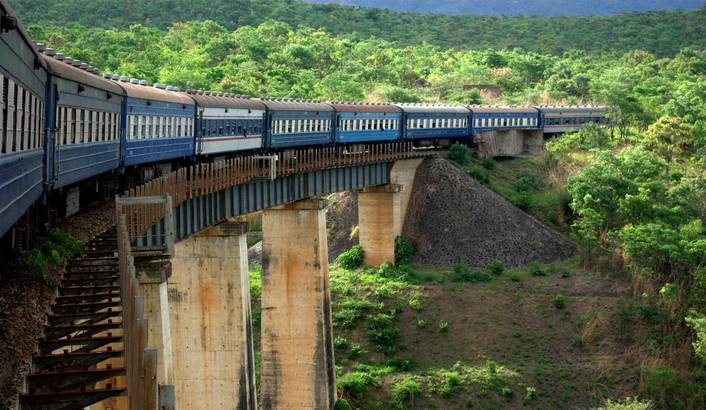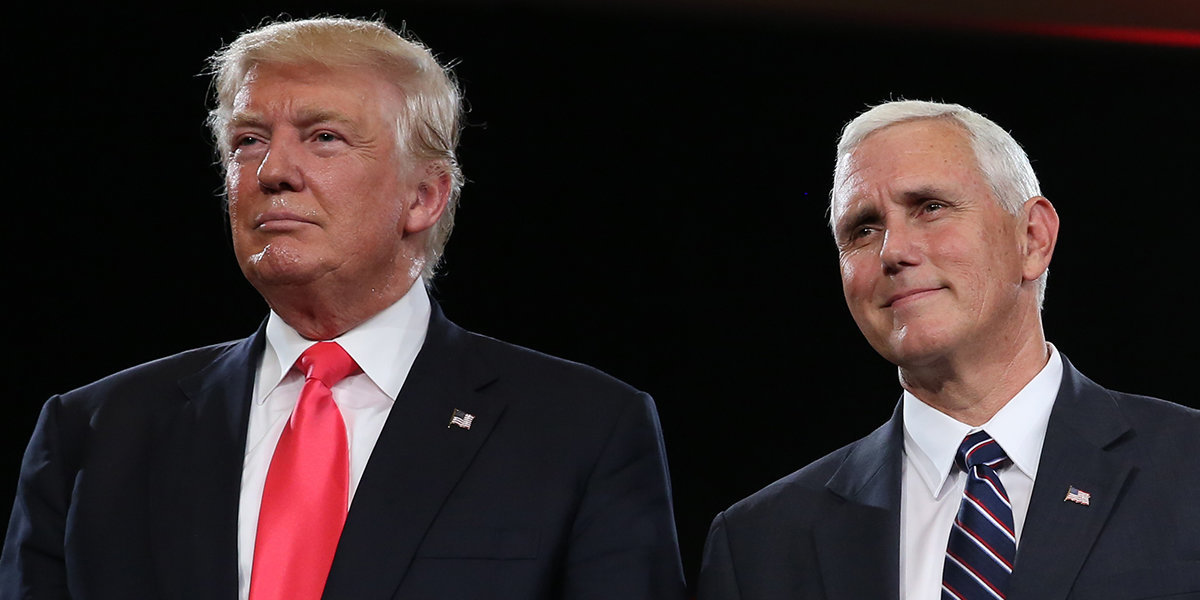News
Tazara: Buggered, but can be fixed
At the time, Tazara was the largest China aid project in Africa, at least $500 million in 1970s prices.

Tazara railway can be turned around, though it will require dollops of political will to do so. At first, it will necessitate a recognition that its current state is not ‘fixed’, even though it suits several key actors to keep it down and out. Turning the political economy of protecting privilege, plunder and survival into one of prosperity will lie at the heart of the railway’s transformation, as with any infrastructure in Africa, writes Greg Mills.
‘Sklikktery klak… screeee… sklikkerty klak’ shaked, rattled and rolled the Tazara railway for 50 hours on the journey between Kapiri Mposhi in central Zambia to Dar es Salaam, 1,860kms away on the Indian Ocean. The brainchild of presidents Kenneth Kaunda and Mwalimu Julius Nyerere, a shared centrepiece of African solidarity, development and anti-colonialism, Tazara is today operational with four scheduled passenger services and infrequent freight trains, but only just. Last year Tazara carried less than 200,000 tonnes of freight, a long way from the five million tonne capacity installed by the Chinese in October 1975.
Just outside the railway station, Dar’s Tazara junction along Nyerere and Mandela roads is a metaphor for the chaos that surrounds the operation of the railway itself. Amid a swirl of dust, cars and motorbikes attempt to make a third, sometimes fourth, unpaved lane to avoid the clog of container-bearing trucks and other vehicles.
In the case of the junction, local demand plus an absence of implementation of planned projects (specifically, a flyover) has created the chaos. With the railway, a combination of government inefficiencies and vested interests has forced users to travel by road. Things usually work for a reason. As it turns out, Tazara doesn’t work very well for equally good reasons.
The statue outside the railway station at Kapiri Mposhi, 200kms to Lusaka’s north, tells a story about the railway’s hopes, blood, sweat and tears, and failure. A giant spade remembers the labour and sacrifice of the 50,000 Chinese and 60,000 Africans who built the 320 bridges, 22 tunnels and 2,225 culverts which dot the route, incorporating not less than a third of a million tons of steel rail alone, all shipped from China. More than 160 workers, including 64 Chinese, died in accidents along the way. Taming the terrain involved a feat of engineering, hardship and bravery second to none.
The passenger coaches are old and worn, the facilities a vigorous assault on the senses, the continuous fight to stay upright made more grim by the wafts from the ablutions, the location advertised by a trail of wet footprints. “You should see Third Class,” says the senior conductor, “they don’t have even have the water-bucket.” The train clatters its way slowly down from the harsh, dry and brown highlands across the green coastal plain towards Dar, dotted with banana and palm trees and rich grasses, passing 93 stations along the way, linking otherwise cut-off, exceptionally poor rural communities.
At Kapwila for example, two hours from the border with Tanzania, locals throng around the train hawking everything from water to, I think, beef. The scenes are sometimes pitiful. I watched one small girl unsuccessfully trying to sell the water she had decanted into old Fanta bottles. It is hard to imagine a happy ending for these ‘Railway Children’.
Inside the train more complex trade is going on. One of the conductors explains that, while she has not been paid her $90 salary for five months, the privilege of her position allows her to trade, for example picking up rice in Dar for 300 kwacha a bag and sell it at Kapiri for Kw400. Others are doing much the same with second hand clothes, known in Bemba as ‘Salaula’ (to ‘pick’ or ‘rummage’), bananas and sweet potatoes, integrating the Central and East African regions in spite of government. I was tempted by the faux $7 leather jacket, less Indiana Jones than Ferris Bueller, but common sense prevailed.
The means of survival, or political economy of operations, are not always immediately clear cut and visible. The same is true for the railroad itself.
At the time, Tazara was the largest China aid project in Africa, at least $500 million in 1970s prices. On the wall of the New Kapiri Mposhi Station is a plaque declaring ‘This foundation stone was laid by Mwalimu Julius K Nyerere, the First President of the United Republic of Tanzania to inaugurate the construction of the Tanzania-Zambia Railway Project on 28th October, 1970’.
Nyerere had gone to the Chinese for support given the US, among others, had declared the railway as without commercial sense. The motive was the need to find another outlet for Zambia’s copper than through white-ruled Angola, Mozambique, Rhodesia or South Africa. Add a large dollop of Pan-Africanism and Nyerere’s Uhurusim, not to mention a pinch of anti-Western salting, and Tazara was a done deal.
Despite the overturned waggons and broken rolling stock littering the lines as well as the declared 48 decayed sections where a speed limit has been imposed and the coaches bounce and lean more than normal, the line is generally in good condition – unsurprising, since it is virtually brand new in railway use terms. In a few places the Chinese-inscribed concrete sleepers have been nicked, leaving the rail sidings sleeperless, for example, in Siginali.
The engraving might well say, ‘We came, we built, and we’re outta here’. The Chinese remain only half interested in keeping the railway dream alive, now into the 15th protocol of assistance. But they don’t seem to want to commit to fixing it, Beijing’s Africa policy no longer driven by misty-eyed sentiment and socialism as much as hard-eyed self-interest and commerce.
The policies of other donors have also not generally helped. Over the last 15 years, Western aid has focused on improving the roads, especially in land-locked Zambia. This pulled traffic off the railway onto the roads. While 60% of the traffic leaving the port of Dar went by rail down the central and Tazara lines combined 25 years ago, today this figure is just 0.7%.
This has not improved the maintenance of roads, to the contrary. “There is no word in any Zambian language,” says one former MP, “for maintenance, and it shows.” Instead aid flows have gone hand-in-hand with gouging on road contracts to fund political campaigns. And when donors have tightened up on governance, the money has gone unspent; for example, half of the most recent European allocation of road funding in Zambia of €140 million was returned to Brussels. Development, donors are to be frequently reminded, is primarily a political and not a technical exercise.
Now in one of their periodic ‘paradigm shifts’ the donors are going back to spending more on governance projects, and not always with commensurate clarity. ‘Strengthening the co-ordination and management of the engendered and rights based multi-sectoral and decentralised response to HIV and Aids’ read the door slogan on the white Land Cruiser in the parking lot of the Lusaka Club. Whoever dreamt that up should be neutered, not engendered.
Today Tazara carries less than 4% of its designed freight capacity. The cost of moving things by road, via Tanzania, Mozambique, Namibia or South Africa, should be much more given the relative load efficiencies of rail. But it’s not. Both are around $145 per tonne. And whereas a truck from the Copperbelt to Durban will take around a week, the train to Dar has been known to take as long as two months. As one of the larger copper producers in Zambia reminds, every day a tonne of copper waits, it costs the company $0.60c.
Back in the 1970s there was a political push to make the railway happen, even though the commercial logic was suspect. Now there is a commercial logic, but the politics are weak, guided less by an ethos of ‘we’ than ‘me’.
Tazara’s sub-optimal operations are not related to a lack of money, even though that remains a perennial problem. There is no money to pay for salaries and sometimes enough just for half a tank of gas for the journey, leaving trains stranded en route.
It’s not principally about having enough equipment or the rail being in bad conditions. Tazara has 90 virtually new Chinese waggons among its working rolling stock of more than 500, and 14 serviceable giant GE locomotives. Our journey took 50 hours, averaging under 40kmh, but we were stopped for more than ten hours messing around at stations, shunting, loading people and produce, and getting through the border. A further hour or more was added by a faulty brake diaphragm, repaired by many men with big and loud hammers.
Still, the delays are largely due to software, human, organisational glitches, not shortages of equipment. They illustrate an asymmetry of national interests with more at stake for the Zambians than the Tanzanians, aside from a trucking lobby reluctant to allow competition in the latter.
And, fundamentally, it points to the short-termism inherent in political decision-making. Changes to Zambia’s mining tax regime over the last six months emphasise this point.
In January, the law was changed from a 6% turnover tax and 30 corporate tax to a flat eight percent turnover tax on underground mines and 20% royalty tax (at London Metal Prices, meaning an effective 25% for Zambian operations who do not sell at LME prices) for open pit operations. This came on the back of an earlier change to withholding VAT payments, resulting in the government prevaricating on paying back around $1 billion to miners. Now, for whatever reason, the government is changing back to a nine percent royalty tax for open pit operations and 30% corporate tax plus a variable tax of 13% above a specified profit threshold.
These are hardly acts of policy consistency to spur confidence in an industry with high capital costs and long investment lead times, as reflected in its imperative of continuously finding the means to improve efficiencies and reduce costs. For example, Kanshanshi Mine, the country’s biggest copper producer at around 260,000 tonnes annually, from which over $3 billion has been paid in taxes and the same amount again invested over the last decade, thought is being given to how Polymer spraying to bring down dust levels will reduce tyre usage on the giant 180-tonne dump trucks. At $60,000 a tyre, increasing the life from 6,000 hours to 9,000 hours is an achievable company goal. Equally the installation of overhead trolley lines for the trucks enabled loads to be carried faster and more cost efficient up inclines.
Taxes aside, the rhetorical shorthand of government towards the industry for a greater slice of the action is manifest in terms such as ‘beneficiation’ and ‘empowerment’. It’s hardly as if the companies are exporting rocks. Far from it.
After geological surveying (Kanshanshi has drilled more than 630km in holes to create a three-dimensional model of the deposit), blasting, digging, and hauling, the copper oxide beneficiation process involves crushing, milling, flotation, leaching, solvent extraction and electro-winning to create cathodes; while the sulphides are beneficiated with flotation to create copper concentrates. Producing copper anode from the latter involves an equally elaborate, high-temperature smelting process. Kanshanshi uses a quarter of a million litres of diesel every day to mine the 80,000 tonnes of ore feed from which 700 tonnes of copper are extracted. The calls for further beneficiation seem to reside in a belief that the companies are pulling pure copper wire out of the ground.

Yet it’s the government that is caught between a rock and a hard place. Money is needed to buy support and win elections, and jobs are required for a population expected to reach 22 million within ten years. More than half of formal sector jobs are now in the civil service, totalling over 300,000, their salaries one of the reasons why Zambia’s debt has tripled in just seven years to over $8 billion. The average fiscal deficit (expenditure in excess of government income from tax and other sources) during 2012-14 was 4.8% of GDP compared to 1.1% in the previous three years.
As much as it might secretly covet mine ownership, saner minds in the government realise that the state has neither the skills nor capital itself to run the mines, as was the case during the 1970s and 1980s, when the state-owned Zambian Consolidated Copper Mines company (ZCCM) was losing a $1 million per day. By comparison, First Quantum Mines, which operates Kanshanshi, paid the same amount in taxes every day during 2014.
The social situation most Zambians – and the 50 million Tanzanians – from the squalor of Lusaka’s townships, to the tin-topped shacks of Nkonde on the border with Tanzania, and the left-out find themselves in, verges on the desperate, a vicious cycle of joblessness, scant education and poor nutrition. This is one of the reasons why the metal lettering under the giant spade statue at Kapiri Mposhi has been picked off and, presumably, sold on for scrap, and where the swill of drunken touts points to a deep social malaise.
Perhaps the perversity of doing business explains why the Chinese, despite their investment of blood and treasure, prefer to keep their distance. They know it will require hands-on management to run Tazara effectively, and they are unwilling to do so. They know from their own experience that the market delivers over ideology.
Tazara can be turned around, though it will require dollops of political will to do so. At first, it will necessitate a recognition that its current state is not ‘fixed’, even though it suits several key actors to keep it down and out. Among other aspects it will also require the recently de-concessioned Zambia Railways improving its own service to link the mining areas with the Tazara line through Kapiri Mposhi.
The benefits would be huge, and would extend beyond mining. Zambia has the potential to double its annual maize output with ease, to four million tonnes. Due to logistics constraints, the most it has ever managed to export in one year has been 600,000 tonnes.
Similarly, it costs $180 per tonne to move fertiliser by road from Beira, and just $50 to Beira from the outside world. Hence its high cost at $400 per tonne. Zambia uses 400,000 tonnes for its annual requirement of two million tonnes of maize. Reduce this input cost, and yields will shoot up. But a way will have to be found to export the surplus, in the process benefitting millions of small-scale farmers among the three-quarters of Zambians who live in the rural areas.
Heart has to be taken from those who trade their way to survival, in spite of the failings of the state, or of those who continuously patch up Tazara’s antiquated rolling stock. Turning the political economy of protecting privilege, plunder and survival into one of prosperity will lie at the heart of the railway’s transformation, as with any infrastructure in Africa. It demands leadership letting go at the top, and finding the means and structure to incentivise those operating the railway at the bottom. It requires managing the politics as much, if not more, than the economics.
The local political economy helps to explain why Dar has proven a cork at the end of Tazara, constipated by combination of corruption and vested interest groups. In 2014 the port did 14.5 million tonnes of trade including 642,000 containers, up from 3.8 million tonnes and 124,000 containers in 2000. Of this, just 1.8 million tonnes is with Zambia. With the port creaking under the strain of handling 1,250 trucks each day, in the port manager’s words, ‘In order for us to be efficient… the railway has to be efficient. The railway has failed us’.
Fixing this will require champions for rail more powerful than the trucking lobby and those who profit from endless delays and demurrage. A recent World Bank report has shown that the time taken by operations averages 20 days per vessel in Dar, compared to 3-4 days in world-class ports. If Dar was to become as efficient as Mombasa today, hardly a global leader, Tanzania would earn approximately an extra US$2 billion per year or 7 percent of its GDP, with a further US$800 million annually flowing to neighbouring countries. There would be obvious benefits from increased flows to port operators and tax authorities, much greater than the US$300 million, which is currently estimated to being made from fees by slowing things down.
De-risking is thus crucial for any investor in such big infrastructure schemes. This requires deep levels of understanding, identification of interest groups, identification of champions, and building of relationships. All that will take time.
A Zambian once described his Land Rover as ‘buggered, not f**ked’. When asked the difference between the two conditions, he said: “If it is buggered, it can be fixed, but f**ked is f**ked.” Quite. Tazara is buggered, but with the right prioritisation and politics it could be fixed.
This article was originally published in The Daily Maverick.


